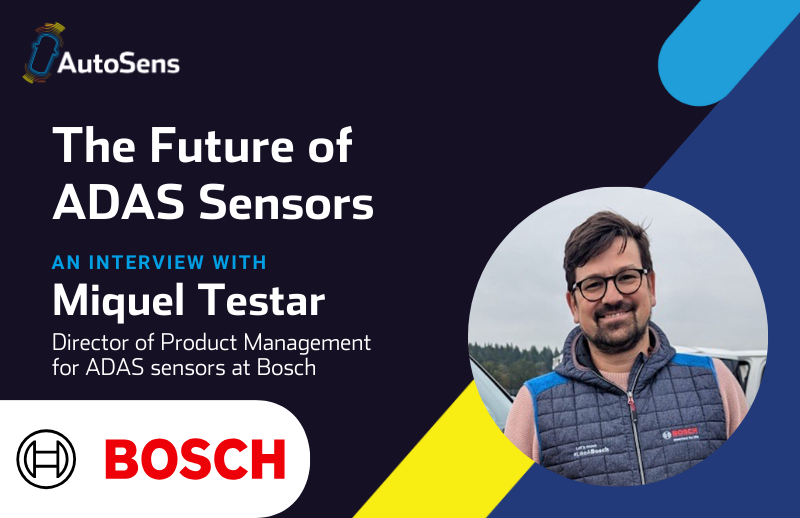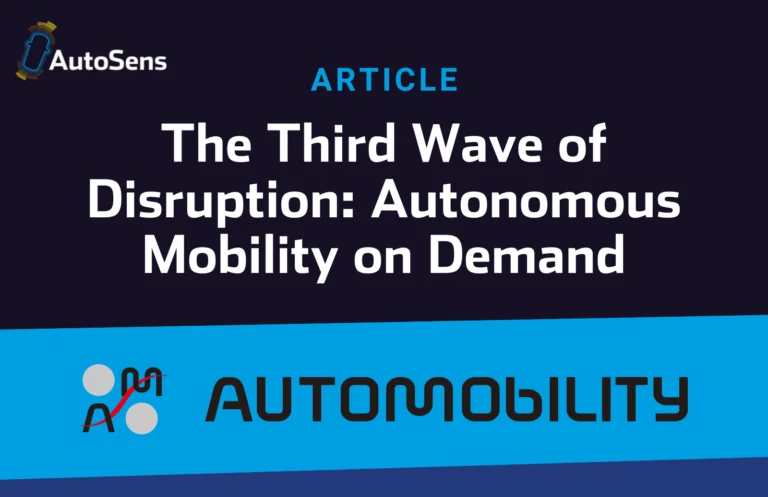The hype surrounding autonomous vehicles shows no signs of dying down.

A number of automotive companies are making bold claims about getting these vehicles on the road, Google self-driving cars have racked up over 1.5m miles of autonomous driving since 2009, for example, and there are programmes in place from Audi, Volvo, Nissan-Renault, GM and Ford to name but a few.
The roadmap is far from well-defined, however. As well as the obvious, overarching themes which stand to impede the progress of the self-driving car – such as security from hackers, liability and insurance — there are also a number of smaller, more complicated factors which are worth understanding.
Many manufacturers are optimistic, but there are inevitable rumbles of discontent, particularly among moral observers, ethics professors and those at the sharp end of R&D in related systems. At a recent U.S. Senate hearing, Duke University robotics Professor Mary Cummings testified that autonomous cars are “absolutely not ready for widespread deployment.” Well perhaps not on public roads, but there are thousands of autonomous vehicles in use around the world at mines, airports and public transport networks, in fact the chances are you have already used one. So it’s really not a question of “if they will be ready” but rather “when they will be ready”.
At AutoSens, which takes place annually in Detroit (May) and Brussels (September), the world’s leading autonomous vehicle professionals gather to discuss the future of autonomous vehicles in depth, but until then, here are thetop four factors our experts believe need to be overcome to lead to the widespread use of self-driving cars.
1. Balancing the need for high-resolution mapping vs improved vision systems
Imaging and photonics solutions cannot yet be trusted to perform the necessary recognition and range finding required for self-driving vehicles independently and in all lighting conditions.
Distance calculation, or ranging, remains a challenge for mono camera methods, although stereoscopic systems are improving, they still have a range limitation. As a natural consequence, this means mapping and GPS systems are relied on heavily. But with the very low signal power of GPS signals coming from satellites, dropouts in storms, wooded or very mountainous areas (arguably some of the more hazardous driving conditions), having reliable data from both maps and computer vision is essential.
Mapping and GPS systems are broadly adopted and widely understood by the big players such as Google, Apple, Microsoft, HERE and TomTom, however this is proprietary data; other companies are forced to license mapping data from national and regional sources available in the commercial sector. Many countries remain unsophisticated in their mapping provision, and this licenced data does not provide the accuracy level required for reliable autonomous navigation.
As a result, all OEMs and automakers will have to utilize more sophisticated mapping for roadside datapoint recognition, because of the limitations of image-based distance recognition. Will this data remain behind closed doors, and to what extent will imaging technology negate the need for ultra-high resolution mapping?
2. Scaling up LIDAR scanner solutions
LIDAR is the technology of choice thanks to its combination of range and accuracy, even in the dark. As a result, it is used in most prototypes of ADAS and autonomous vehicle.
However, it’s not uncommon for a single LIDAR scanner to cost over $80k. Lower cost options are hitting the market and regularly announced, but exactly how this supply/demand curve will change, and when, remains an uncertainty. It is widely expected that as the best current technology, increased demand will eventually push down prices while increasing technical capabilities.
There is still an issue of mutual interference between LIDAR scanners in some vehicles. Although the problem is currently not damaging, we only need think a few years into the future to examine the potential problems. What happens when there are hundreds of vehicles using LIDAR sharing the same frequency band on a busy multi-lane road?
[button link=”#mailmunch-pop-172267″ linktarget=”_blank” color=”blue” size=”medium” style=”flat” fullwidth=”false”] [icons style=”icon-envelope” size=”18px” color=”#ffffff”] Join the AutoSens Mailing List [icons style=”icon-arrow-right” size=”18px” color=”#ffffff”][/button]
Finding a way to prevent interference is the next step in the process, and there is much work going on behind closed doors to deliver this. Until LIDAR matures, even as a complementary sensor technology, will continue to be important to source and develop existing sensor solutions, including radar, for range finding and object detection and cameras for lane finding and object recognition.
The future self-driving car will inevitably have a combination of sensor inputs, but the balance of modalities will be influenced by developments in LIDAR. Even if LIDAR undergoes a drastic cost reduction, the benefits of using lower cost stereo imagers will likely prevail. LIDAR most likely will be used as long-range detection system and image sensors + computer vision algorithms used for shorter range.
3. Where will processors go?
Current luxury vehicles have between 7-9 image sensors for various forms of recognition. However, driver monitoring, surround-view style external vision systems, and gradual phasing out of side mirrors to reduce fuel consumption will help push these numbers up to around 10-12 per vehicle by 2020. More importantly, these sensors will become more prevalent in mainstream vehicles and not just in luxury vehicles.
Signal processors vs sensors per vehicle have now been pushed to nearly a 1:1 ratio. Previously, it was believed that single or dual logic sources (GPU, FPGA, SoC, CPU) could be contained in the trunk of a vehicle instead of the side mirror, and could also provide signal processing through a wiring harness to support all these outbound sensors. However, analysis of this wiring harness found that its cost would be problematic for vehicle manufacturers.
[su_box title=”You might also enjoy…”]
- Will half the US really be 20 years behind the driverless revolution?
- Why Amazon could be the biggest disruptor in driverless cars…
- Women in Automotive – Where are they?
[/su_box]
The method of placing local processors near sensors is predominant, so should manufacturers stick with single shielded wiring harnesses? Signal processors have to support small sensor clusters, and be placed closer to these sensors to ensure that there is no interference or degradation in the signal. One major factor is whether processing for LIDAR, radar, geo-positioning and infotainment are all used in conjunction with camera image processing. This approach requires significant processing power, and tends towards a requirement for a central ECU solution, but this need must be balanced with previously mentioned issues.
There has also been a general move toward Power over Coax (PoC) solutions, with the aim of further reducing cabling. Overall, system architecture is still an area of hot debate and there is no clearly defined route or standard approach from OEMs. As processing power, heat management and cabling solutions all improve, new possibilities in system architecture will open up, so watch this space.
4. Mitigating risk
An automotive manufacturer’s requirement to mitigate risk in the supply chain / inventory differs when compared to consumer devices like the smartphone-fuelled revolution in image sensors. Simply put, cars last a lot longer.
Auto manufacturers must mitigate risk through their component suppliers. They require a sensor or a logic device specification to be available for the typical life of the vehicle, meaning component suppliers need to provide this specification part up to and perhaps over a decade after original implementation. But unlike in the mobile phone industry, the longer life product of the automobile industry can provide a constant, steadier income.
This also puts more emphasis onto field programmability by the supplier into the original specified part, sensor and logic. One potential solution could be low-cost FPGA solutions but GPU, SoC, and DSP/ISP players all have a role to play and the inventory issue, as before, should also be a consideration.
While there seems to be no doubt that self-driving cars are part of the future of the automotive industry, just how aggressively they will be rolled out and the exact form they will take is yet to be decided.
This is an exciting time to be involved in the automotive sector, and we look forward to the role AutoSens can play in accelerating technology development.
Find out more:
Delve deeper into all of these areas and a host of extra content at AutoSens, held in September at AutoWorld in Brussels, Belgium and in May at Michigan Science Center, Detroit.
Carefully selected experts discuss the shared challenges, innovation, standardisation and supply chain collaboration involved with the development of the latest ADAS technologies and self-driving cars via panels, presentations and conversations.
Sign up for the latest updates: [button link=”#mailmunch-pop-172267″ linktarget=”_blank” color=”blue” size=”medium” style=”flat” fullwidth=”false”] [icons style=”icon-envelope” size=”18px” color=”#ffffff”] Join the AutoSens Mailing List [icons style=”icon-arrow-right” size=”18px” color=”#ffffff”][/button]






